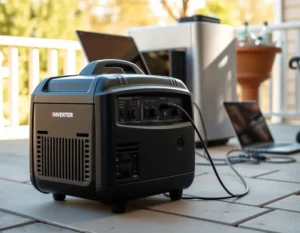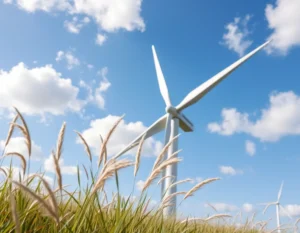Entender cómo se forma un huracán nos permite estar un paso adelante y prevenir los devastadores efectos de estos fenómenos naturales. En especial, en zonas propensas a huracanes como Puerto Rico, conocer el proceso detrás de un huracán puede hacer una diferencia crucial. En este artículo, exploraremos en detalle los factores y etapas involucrados en la formación de un huracán.
Qué es un Huracán y su Clasificación
Antes de adentrarnos en cómo se forma un huracán, es fundamental definir qué es este fenómeno natural y cómo se clasifica. Un huracán es un tipo de ciclón tropical caracterizado por tormentas y vientos extremadamente fuertes. Se clasifican en cinco categorías según la escala Saffir-Simpson, que se basa en la velocidad del viento:
- Categoría 1: Vientos de 119-153 km/h
- Categoría 2: Vientos de 154-177 km/h
- Categoría 3: Vientos de 178-208 km/h
- Categoría 4: Vientos de 209-251 km/h
- Categoría 5: Vientos superiores a 252 km/h
Los huracanes de categorías 3 a 5 se consideran huracanes mayores debido a su potencial destructivo. Para una explicación detallada sobre los diferentes tipos de huracanes, consulta nuestra guía en Tipos de Huracanes.
Las Condiciones Iniciales: Semillas del Huracán
Para entender al completo como se forma un huracán es necesario echar un vistazo al proceso que atraviesa el mismo, este empieza con varios componentes primordiales:
- Aguas Cálidas: Los huracanes se forman sobre el océano, donde la temperatura del agua es de al menos 26.5°C (80°F). El calor y la humedad del océano son el «combustible» que alimenta el sistema.
- Perturbaciones Atmosféricas: Una perturbación preexistente de poca presión, conocida como baja presión superficial, ofrece el punto de partida. Estas perturbaciones pueden originarse como ondas tropicales, depresiones tropicales o áreas de baja presión.
- Alta Humedad Relativa: La atmósfera necesita tener alta humedad relativa, especialmente en los niveles medios (alrededor de 5 a 12 km por encima de la superficie).
- Vientos en Cizalladura Baja: La cizalladura del viento debe ser baja. Una vertical fuerte puede romper la estructura del huracán en formación y dispersar su energía.
Estas condiciones establecen el escenario ideal para que una perturbación tropical incremente su fuerza y evolucione en un huracán.
Formación y Evolución de un Huracán
El Ciclo de Crecimiento: De la Perturbación al Huracán
- Depresión Tropical: Una vez que la perturbación comienza a organizarse, sus vientos alcanzan entre 37 y 62 km/h. Esta etapa inicial es llamada depresión tropical.
- Tormenta Tropical: A medida que el sistema se intensifica, obtiene el nombre de tormenta tropical, con velocidades de viento que oscilan entre 63 y 118 km/h. En esta fase, la tormenta adquiere una estructura más definida y se le asigna un nombre.
- Huracán: Cuando los vientos superan los 119 km/h, la tormenta se clasifica oficialmente como un huracán.
Dinámica en el Núcleo: El Ojo y la Pared del Ojo
Una parte fundamental para comprender como se forma un huracán es ser consiente de sus componentes. El «ojo» del huracán es una zona de calma relativa en el centro del sistema. A su alrededor, se encuentra la pared del ojo, una región con las tormentas más severas y los vientos más veloces. La formación de estas características es fundamental para entender cómo se forma un huracán:
- El Ojo: A medida que la rotación del viento se intensifica, el aire en el centro del sistema desciende, calentándose adiabáticamente (esto es, sin intercambio de calor con el entorno). Este calentamiento impide la formación de nubes, creando el ojo despejado.
- La Pared del Ojo: Es donde las tormentas más feroces concentran su energía. La combinación de movimientos ascendentes y rotación rápida crea un cinturón de nubes y vientos increíblemente poderosos.
Mecanismos de Refuerzo: Liberación de Calor Latente
La liberación de calor latente es esencial en el ciclo de vida de un huracán. La evaporación de agua en la superficie del océano sube al sistema de tormentas y luego se condensa en la atmósfera, liberando calor. Este proceso no solo alimenta el huracán, sino también intensifica los vientos y las lluvias.
Factores que Influyen en la Intensidad y Trayectoria
Influencias Externas: Alta y Baja Presión
Para comprender cómo se forma un huracán es importante entender que las áreas de alta y baja presión alrededor del huracán influyen significativamente en su dirección y velocidad:
- Altas presiones subtropicales: Generalmente, en el Atlántico Norte, las altas presiones subtropicales pueden desviar el huracán hacia el oeste.
- Bajas presiones y vaguadas: Estas pueden atraer al huracán hacia el norte o el este, cambiando su trayectoria.
Interacción con la Superficie Terrestre y las Aguas
- Interacción con la Tierra: Al tocar tierra, la fuerza del huracán disminuye rápidamente debido a la pérdida de la fuente de calor y humedad (el océano).
- Aguas Frías: Pueden debilitar significativamente el sistema, ya que disminuyen el suministro de energía.
- Alejarse de Aguas Cálidas o Interactuar con Masas de Aire Seco: También puede hacer que el huracán pierda fuerza.
Modelos de Predicción y Prevención
Los modelos de predicción son herramientas esenciales para anticipar la formación y trayectoria de un huracán. Basándose en datos de satélites, radares y boyas oceánicas, estos modelos permiten crear simulaciones precisas del movimiento y desarrollo de estos fenómenos naturales.
En Puerto Rico, donde estos eventos son frecuentes, comprender cómo se forma un huracán y prepararse adecuadamente para afrontarlo es crucial. Una medida efectiva para asegurar la continuidad del suministro eléctrico durante y después de un huracán es el uso de generadores eléctricos diésel.
Con JRH de tu lado, podrás garantizar la seguridad y el confort de tu hogar o negocio en situaciones de emergencia. No esperes a que llegue la tormenta, ¡Prepárate hoy y protege lo que más importa!
Conclusión
¡Ahí lo tienes! Un vistazo detallado al complejo proceso de cómo se forma un huracán. Comprender cada etapa y los factores que influyen en la formación y la intensidad de estos sistemas puede proporcionarnos una mejor preparación y respuesta cuando los huracanes se aproximan a nuestras costas.
Para garantizar que estés completamente preparado, visita nuestra página principal donde encontrarás nuestros servicios y la venta de generadores. No dejes tu seguridad al azar, ¡asegura tu hogar o negocio con JRH Power Generator hoy mismo!



